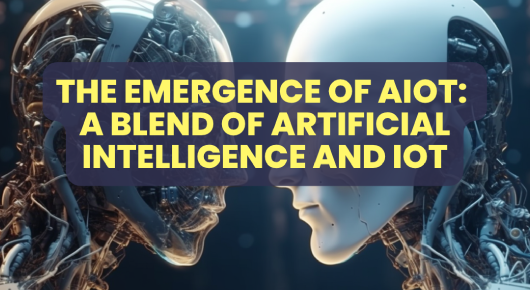What exactly is AIoT? This term has become a hot topic again after ChatGPT has taken the world of Generative AI by storm this year in 2023.
The Birth of AIoT: An Integrated Ecosystem
Artificial Intelligence of Things (AIoT) stands at the intersection of two groundbreaking technological domains: Artificial Intelligence (AI) and the Internet of Things (IoT). By combining the analytical and learning capabilities of AI with the interconnected nature of IoT infrastructure, AIoT creates an integrated ecosystem where operational efficiency and data management are significantly improved.
AIoT and Edge Computing: Autonomy and Efficiency
At the heart of AIoT is Edge Computing, which allows for the execution of AI directly on IoT devices. This unique configuration minimizes or sometimes removes the necessity for external connections, paving the way for unparalleled operational efficacy and autonomy.
AIoT across Industry Verticals: Unleashing Untapped Potentials
AI and IoT, working in tandem, unlock vast potentials across numerous sectors, including autonomous vehicles, remote healthcare, precision agriculture, industrial automation, and personalized fitness. The blend of AI’s decision-making prowess with IoT’s efficiency is initiating a new era of technological innovation.
AI in Healthcare: Transforming Medical Devices
In the healthcare sphere, AI has become a game-changer, shaping the landscape of medical devices. The 21st Century Cures Act outlines the use of AI in medical equipment, with the FDA providing regulatory oversight. Notably, FDA-approved medical devices employing AI and Machine Learning are rising.
AI and Cloud Engineering: Maximizing Data Collection
AI’s integration into cloud engineering revolutionizes data collection and enhances performance across numerous sectors. When combined with cloud computing’s commercialization, standardization, and governance, AI paves the way for improved workload automation and efficient data management.
The Advent of Smart Devices: AIoT at Work
AIoT enables the creation of “smart” devices. These autonomous devices can learn, analyze, and make data-driven decisions, reducing human involvement. From energy-saving sensors in office buildings to AI-driven security systems in the retail sector, the applications of AIoT are diverse and growing.
AIoT and Urban Planning: The Rise of Smart Cities
AIoT is changing the face of urban planning. Smart cities, powered by AIoT, leverage real-time data from strategically placed sensors to manage traffic flow, thereby reducing congestion and enhancing overall urban mobility.
Addressing Security Challenges in AIoT
Despite its enormous potential, AIoT brings specific privacy and security concerns. Since many AI systems in IoT are cloud-based, they may become targets for hackers. As such, strategies to mitigate risks, such as edge computing, are increasingly significant in developing and deploying AIoT solutions.
Looking Ahead: The Future of AIoT
AIoT development is a process that evolves from basic device-to-device connections to advanced peer-to-peer communication facilitated by AI chips. As IoT devices proliferate and AI’s implementation across sectors continues, the rise of AIoT seems a foregone conclusion. Yet, harnessing its full potential will require addressing inherent challenges and developing robust security measures to ensure sustainable and safe growth
Author: Dr.
10 Things You Need to Know About Smart Farming

With the global population expected to reach a staggering 9.7 billion by 2050, the demand for food production has never been more critical. To ensure that this growing population is…

